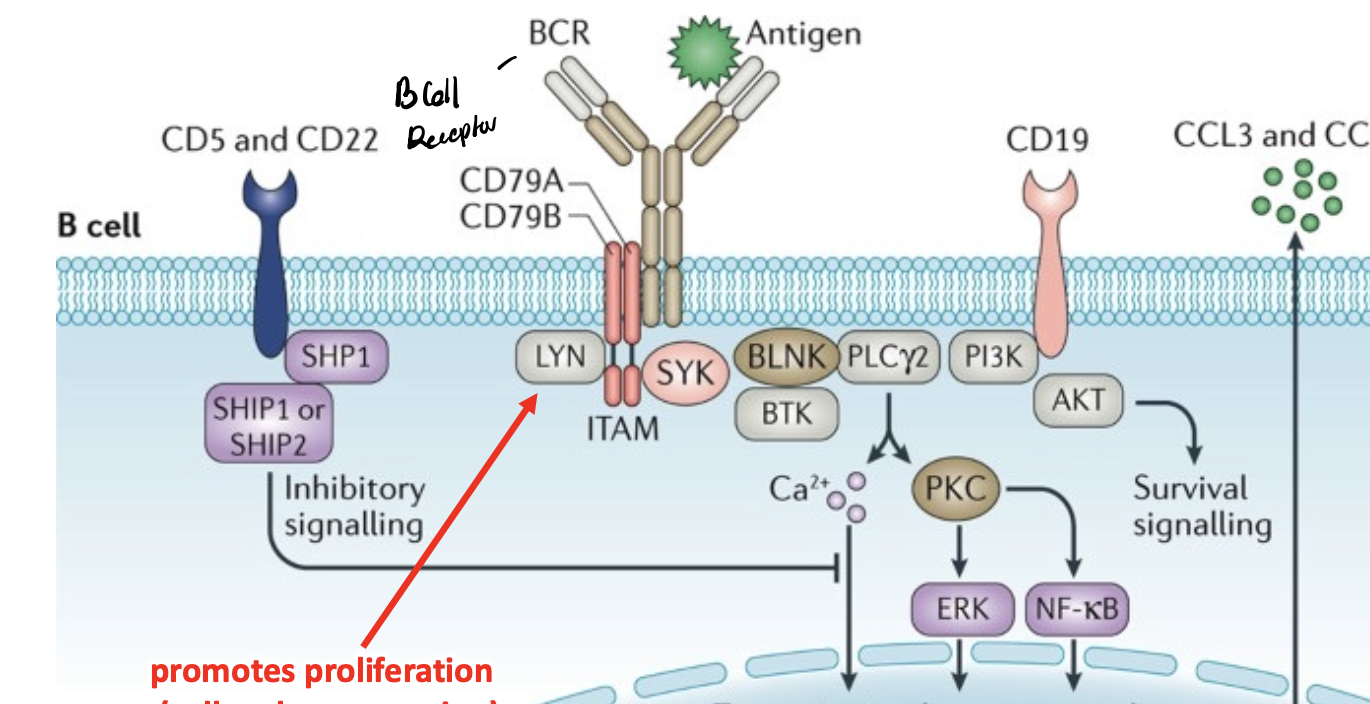Dunn M&C - B Cells (EXTRA-POINTS ON FINAL)
1/15
There's no tags or description
Looks like no tags are added yet.
Name | Mastery | Learn | Test | Matching | Spaced |
|---|
No study sessions yet.
16 Terms
innate immunity
the body's natural, nonspecific, pre-existing first line of defense against infection, present from birth
recognizes pathogen-associated molecular patterns through pattern recognition receptors (PRRs)
stimulates the adaptive immune system through cytokine signaling
pathogen-associated molecular patterns (PAMPs)
conserved molecules, unique to microbes and not found in host cells, that signal the presence of a pathogen and trigger immune responses
lipopolysaccharides, double-stranded RNA, cytoplasmic DNA
pattern recognition receptors (PRRs)
crucial part of the innate immune system, acting as sensors to detect and respond to pathogen-associated molecular pattern
cytokines
small signaling molecules produced by various cells, including immune cells, that regulate inflammation and immune responses
adaptive immunity
specific and long-lasting immune response that develops after exposure
key components: B lymphocytes and T cells
B lymphocytes
differentiate in bone marrow; produce antibodies, which are symmetrical and bivalent molecules
expresses one and only one antibody
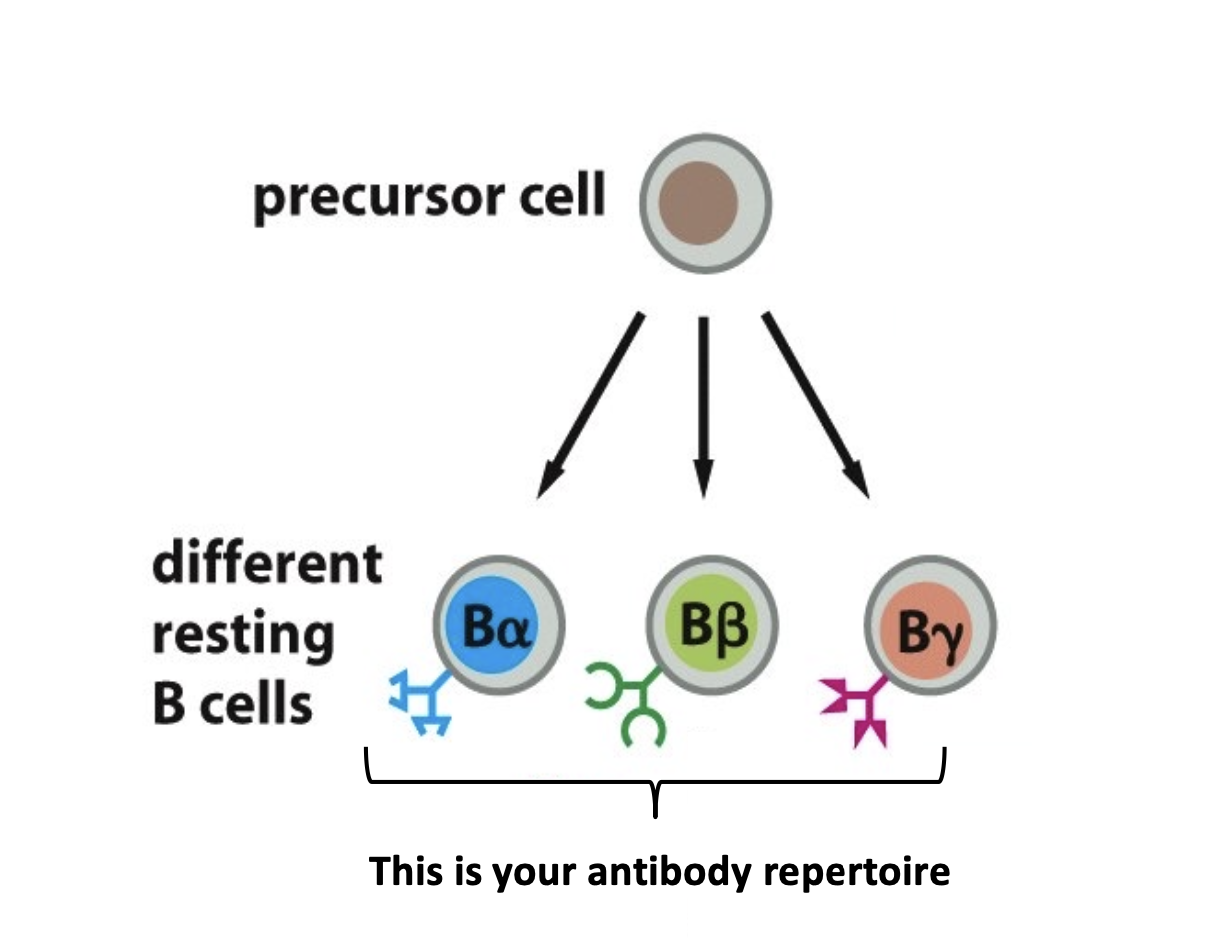
T cells
differentiate in the thymus; crucial part of the immune system responsible for cell-mediated immunity
thymus
a primary lymphoid organ, crucial for developing and maturing T-cells, a vital part of the immune system
antibodies
proteins produced by the body's immune system to help neutralize or eliminate foreign invaders like bacteria and viruses
two identical heavy chains and two identical light chains
two identical antigen-binding sites
disulfide bonds hold the heavy and light chains together
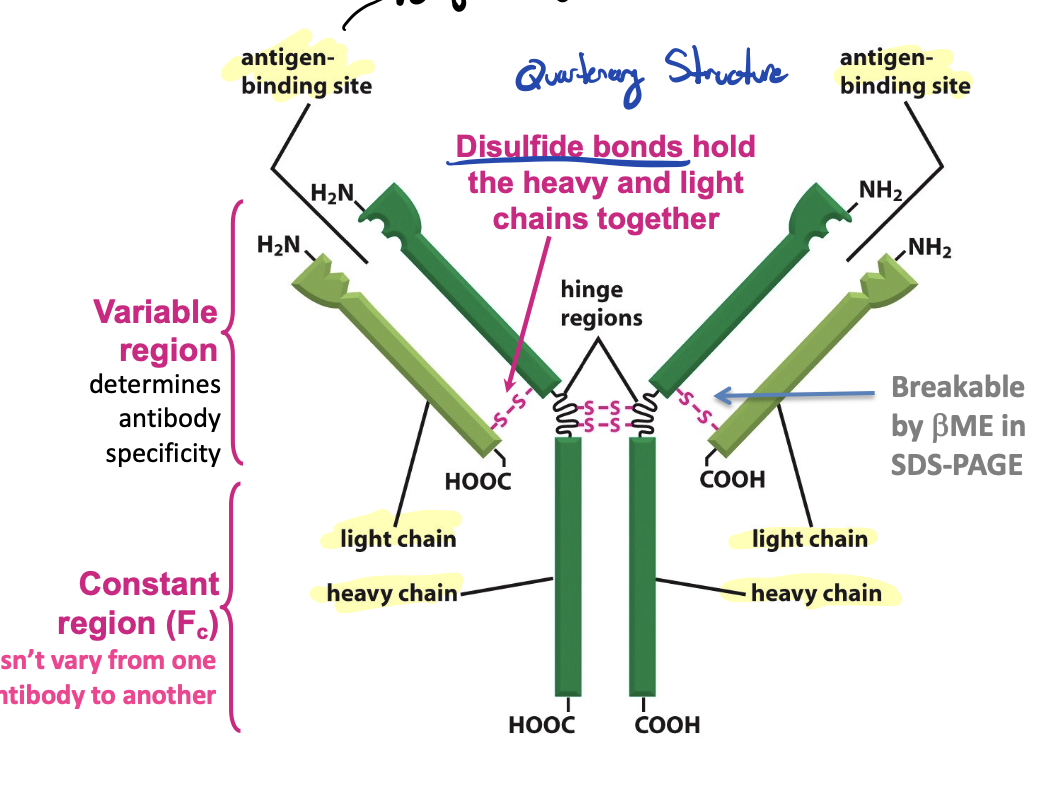
variable region of antibody
determines antibody specificity, binds antigens
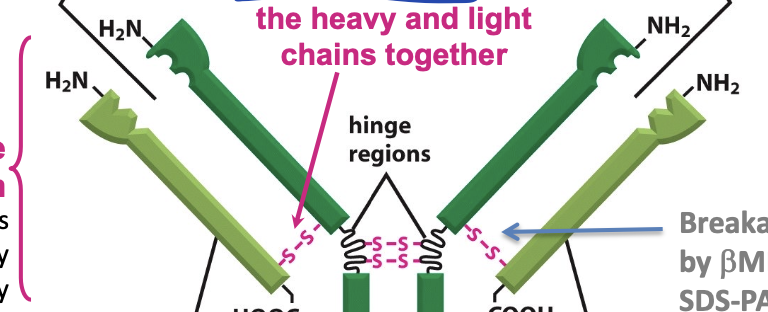
constant region of antibody
doesn’t vary from one antibody to another
carries out the business of the antibodies
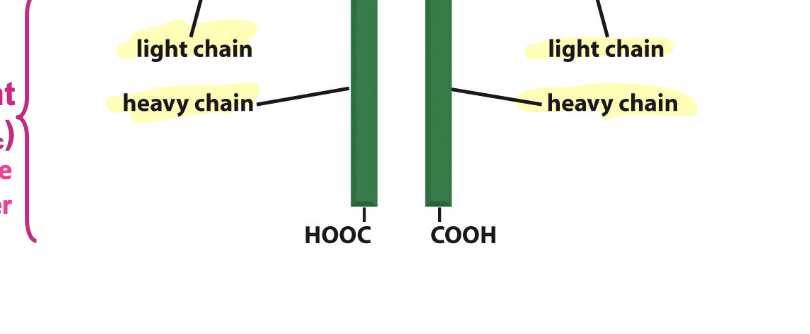
antibody light and heavy chains
generated by genetic recombination (permanent genomic rearrangement)

antibody diversity
generated by a combinations of
(1) DNA rearrangements
(2) somatic hypermutations
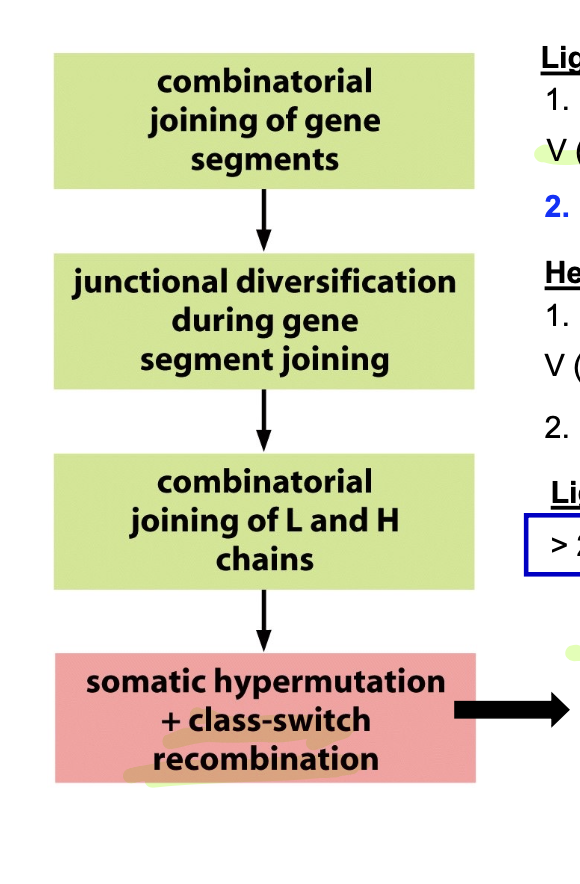
somatic hypermutation
purposeful mutations of antibody genes in cells that recognize an antigen to create even more effective antibodies (higher affinity)
the few produced that are more effective are selected for expansion
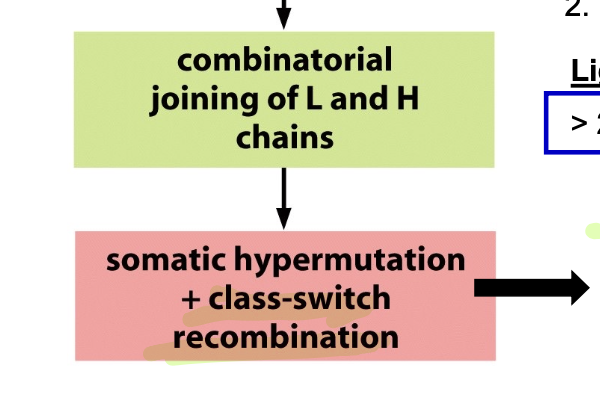
clonal selection theory
explains how the immune system selectively amplifies the population of lymphocytes (B and T cells) that recognize and respond to a specific antigen, leading to the development of a specific immune response
Every B cell expresses one and only one antibody; B cells are activated to proliferate by binding to an antigen
antigen binding to a resting B cell stimulates it to switch its antibody type to a secreted form
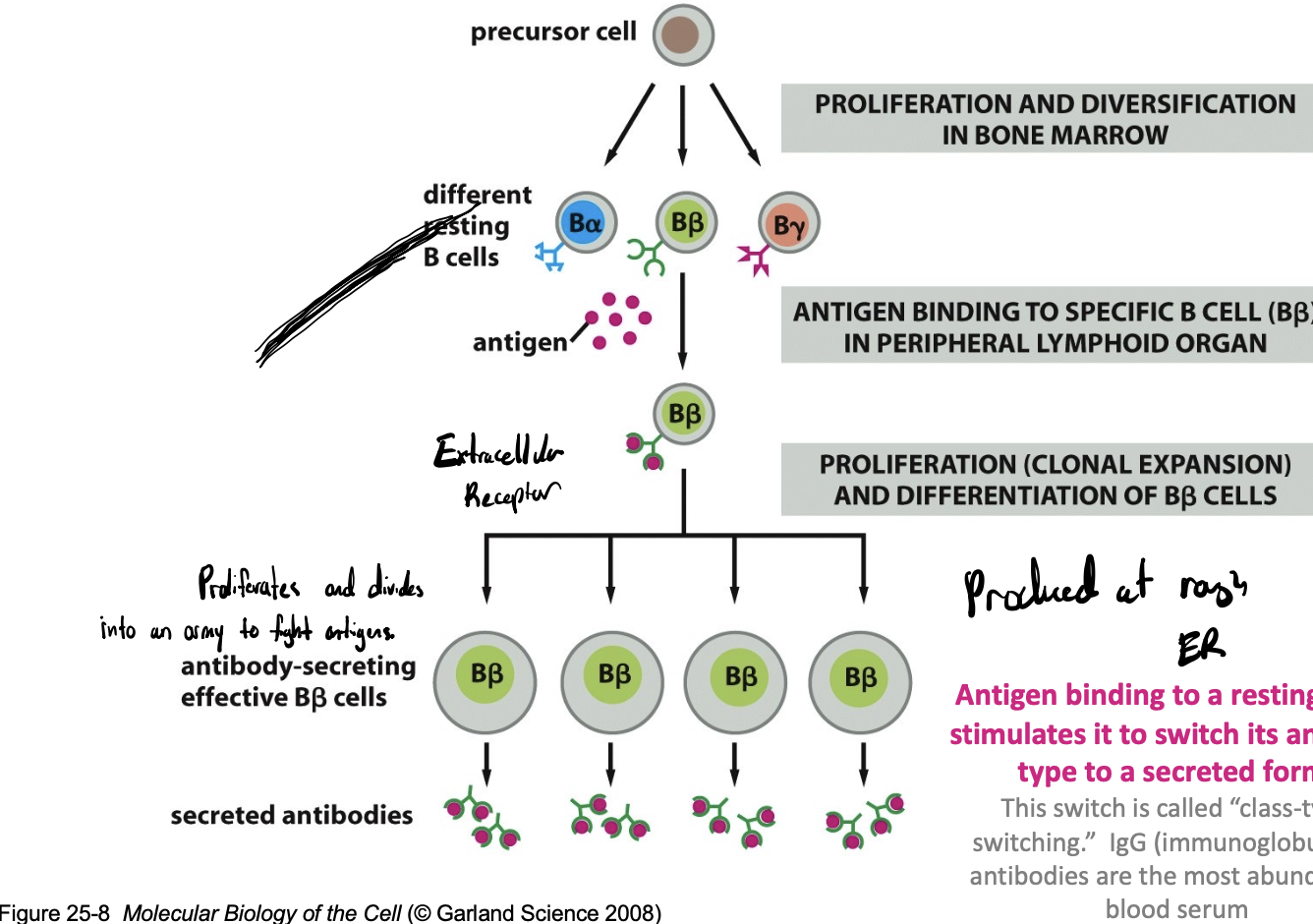
antigen binding to B cells
initiates a signaling pathway that leads to proliferation and survival (cell cycle progression)
